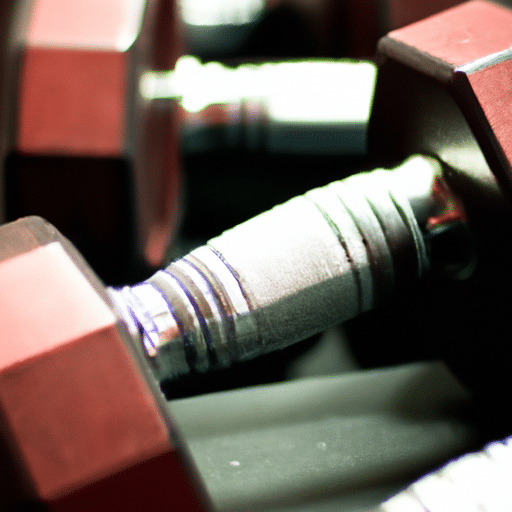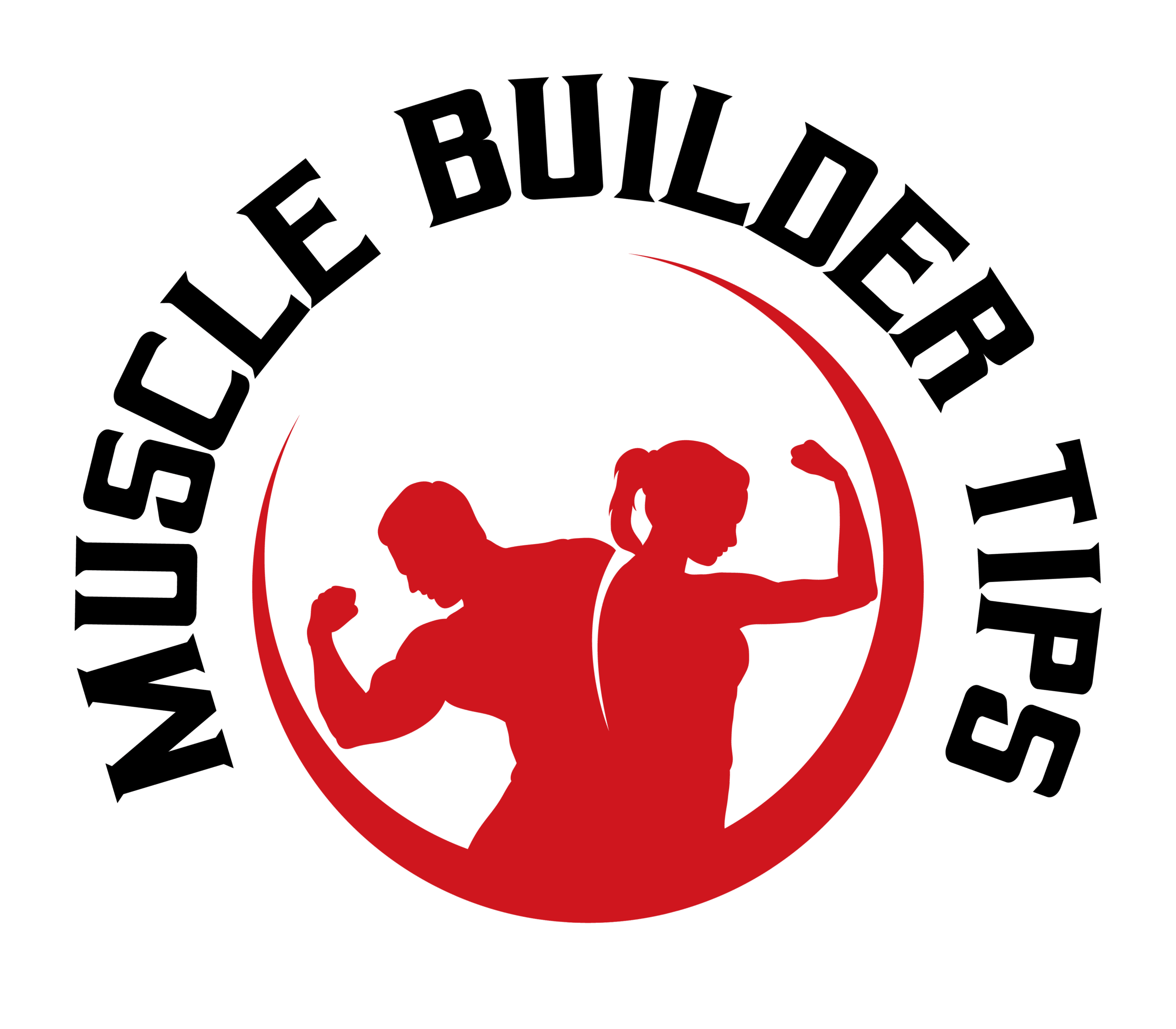
Hey, have you ever wondered how long it takes to build muscle as a female? It’s a common question, and one that many women are curious about. Building muscle is a fantastic way to improve your overall strength, tone your body, and boost your metabolism. But how long does it actually take to start seeing results?
Well, the answer is not as straightforward as you might think. There are several factors that can influence how quickly you build muscle, including your genetics, diet, training program, and overall consistency. Some women may start to see visible changes within a few weeks of consistent training and proper nutrition, while others may take a bit longer. In our upcoming article, we’ll delve deeper into this topic and provide you with all the information you need to know about the timeline for building muscle as a female. So stay tuned and get ready to learn more!
How Long Does It Take To Build Muscle For Females
Building muscle is a goal shared by many individuals, regardless of gender. Often, the focus is on male muscle building, with female muscle building being overshadowed. However, understanding the time it takes for females to build muscle is crucial for designing effective workout plans and setting realistic expectations. In this article, we will explore the duration of muscle building for females, factors influencing the speed of muscle growth, effective strategies for muscle building, common mistakes to avoid, tailoring workouts for females, the role of diet in muscle building, and the importance of muscle recovery and maintenance.
Importance of Muscle Building for Females
Before delving into the time it takes to build muscle for females, let’s first understand the importance of muscle building for women. Contrary to popular belief, muscle building does not lead to a bulky or masculine appearance in females. Instead, it helps increase strength, improve overall body composition, enhance metabolism, and promote better physical and mental health.
Factors Affecting Muscle Building in Females
Various factors influence muscle building in females. It’s important to recognize that each individual’s journey is unique, and results may vary. Some common factors that can affect muscle building include genetics, age, hormone levels, and overall health. While genetics determine an individual’s muscle building potential, age and hormone levels can impact the rate at which muscle growth occurs.
Physiological Differences in Muscle Building Between Males and Females
It’s essential to understand that females have distinct physiological differences compared to males when it comes to muscle building. Generally, males tend to have a higher percentage of lean muscle mass and higher levels of testosterone, a hormone that aids in muscle growth. However, this doesn’t mean that females cannot build muscle effectively. With the right strategies and a focused approach, females can achieve impressive muscle growth.
Duration of Muscle Building for Females
Timeframe for Initial Muscle Adaptations
When starting a muscle-building journey, you may wonder how long it takes to see the initial adaptations. Typically, within the first four to eight weeks of consistent resistance training, females can expect to notice improvements in muscle endurance, strength, and overall performance. These initial adaptations are often accompanied by an increase in muscle tone.
Time Required to Notice Visible Muscle Growth
The timeline for visible muscle growth varies from person to person. On average, it may take around three to six months of consistent training and proper nutrition to notice visible muscle growth. However, some individuals may observe faster or slower progress depending on factors such as genetics, training intensity, and overall lifestyle.
Factors Influencing the Speed of Muscle Building
Several factors influence the speed at which females build muscle. Genetics play a significant role, as some individuals naturally have a higher muscle-building potential than others. Age is another factor to consider, as muscle building tends to be more challenging as we age. Additionally, hormone levels, especially estrogen and progesterone, can affect the rate of muscle growth in females.

This image is property of pixabay.com.
Determining the Rate of Muscle Building
Genetics and Muscle Building Potential
Genetics is a critical factor that determines an individual’s muscle-building potential. Some individuals may naturally have a greater propensity for muscle growth due to their genetic makeup. However, it’s important to note that genetics should never be a limiting factor in pursuing muscle-building goals. With the right training and nutrition strategies, anyone can make significant progress.
Effects of Age on Muscle Building
As mentioned earlier, age can impact the rate of muscle building. As females age, muscle loss becomes more prevalent, which can make it more challenging to build muscle. However, regular resistance training and proper nutrition can help slow down age-related muscle loss and stimulate muscle growth, regardless of age.
Role of Hormones in Muscle Growth
Hormones, such as estrogen and progesterone, play a vital role in muscle growth. Estrogen helps maintain overall muscle quality and promotes muscle repair and growth. Progesterone, on the other hand, may have a slight inhibitory effect on muscle protein synthesis. However, hormonal fluctuations throughout the menstrual cycle do not significantly hinder muscle growth. With proper training, nutrition, and overall hormonal health, females can achieve remarkable muscle growth.
Effective Strategies for Muscle Building
Progressive Overload Training
Progressive overload training is a fundamental strategy for muscle building. It involves gradually increasing the demands placed on the muscles over time. This can be achieved by adding more weight, increasing repetitions, or shortening rest periods between sets. By continuously challenging the muscles, they adapt and grow stronger, leading to muscle growth.
Proper Nutrition and Muscle Building
Proper nutrition is essential for muscle building in females. It’s crucial to consume a balanced diet that includes an adequate amount of protein, carbohydrates, and healthy fats. Protein, in particular, is essential for muscle repair and growth. Aim to consume around 0.8 to 1 gram of protein per pound of body weight to support muscle building goals.
Importance of Rest and Recovery
In the pursuit of muscle growth, rest and recovery are often overlooked. It’s during periods of rest that muscles repair and rebuild themselves, leading to growth. Adequate sleep, typically around 7-9 hours per night, is crucial for optimal muscle recovery. Additionally, incorporating rest days into your training schedule allows the muscles to recover and reduces the risk of overuse injuries.

This image is property of pixabay.com.
Avoiding Common Muscle Building Mistakes
Overtraining and Its Negative Impact
Overtraining can have a detrimental effect on muscle growth. Excessive training without sufficient recovery can lead to fatigue, decreased performance, and even overuse injuries. It’s important to strike a balance between challenging workouts and adequate rest to avoid overtraining and maximize muscle-building potential.
Neglecting Proper Form and Technique
Maintaining proper form and technique is crucial for effective muscle building. Performing exercises with incorrect form not only reduces their effectiveness but also increases the risk of injury. It’s essential to prioritize proper technique and seek guidance from a qualified fitness professional if needed.
Focusing Solely on Cardiovascular Exercise
While cardiovascular exercise is important for overall health, focusing solely on cardio can hinder muscle-building goals. Resistance training, which includes exercises that target specific muscle groups, is necessary for optimal muscle growth. Incorporating both resistance training and cardiovascular exercise into your workout routine allows for a well-rounded approach to muscle building.
Tailoring Muscle Building Workouts for Females
Specific Exercises for Female Muscle Building
When designing a muscle-building workout routine for females, it’s important to incorporate exercises that target major muscle groups. Compound exercises such as squats, deadlifts, bench presses, and lunges engage multiple muscle groups simultaneously, leading to greater muscle activation and growth.
Resistance Training vs. Cardiovascular Training
While both resistance training and cardiovascular training have their benefits, resistance training should be the primary focus for muscle building. Resistance training stimulates muscle growth by creating microscopic tears in the muscles that then repair and grow stronger. Cardiovascular training, on the other hand, primarily focuses on improving cardiovascular endurance and burning calories.
Incorporating High-Intensity Interval Training
High-Intensity Interval Training (HIIT) is a valuable addition to any muscle-building routine. It involves short bursts of intense exercise followed by brief recovery periods. HIIT workouts can be time-efficient and highly effective for boosting metabolism, burning fat, and promoting muscle growth.

This image is property of pixabay.com.
Tips for Effective Muscle Building
Setting Realistic Goals
Setting realistic goals is crucial for maintaining motivation and making consistent progress. Be sure to set attainable targets based on your current fitness level and lifestyle. Celebrate each milestone along the way to keep yourself motivated and focused on your muscle-building journey.
Tracking Progress and Making Adjustments
Tracking your progress is essential to gauge the effectiveness of your training and nutrition strategies. Keep a workout journal, take progress photos, and record measurements to monitor changes in muscle growth. If progress slows down, consider making adjustments to your training program or nutrition plan to continue challenging your muscles.
Incorporating Variety in Workouts
To prevent plateaus and maintain motivation, it’s important to incorporate variety into your workouts. Constantly challenging your muscles with different exercises, rep ranges, and training techniques helps stimulate muscle growth and prevents training boredom.
Understanding the Role of Diet in Muscle Building
Caloric Surplus and Muscle Growth
To build muscle, it’s necessary to consume a slight caloric surplus. This means consuming more calories than your body needs for basic functions and daily activities. The surplus provides the extra energy required for muscle repair and growth. However, it’s important to strike a balance and avoid excessive calorie consumption, as this may lead to unwanted fat gain.
Macronutrient Ratios for Muscle Building
In addition to a caloric surplus, proper macronutrient ratios are crucial for muscle building. Aim to consume around 40-50% of your calories from carbohydrates, 25-35% from protein, and 20-30% from healthy fats. Protein is particularly important, as it provides the building blocks for muscle repair and growth.
Importance of Protein Intake
Protein intake is a key consideration for muscle building. Consume an adequate amount of protein with each meal, aiming for a total daily intake of around 0.8-1 gram of protein per pound of body weight. Include protein sources such as lean meats, poultry, fish, eggs, dairy products, legumes, and plant-based protein alternatives to support muscle growth.

Importance of Muscle Recovery and Maintenance
Role of Rest Days in Muscle Building
Rest days play a crucial role in muscle building. Allow your muscles time to recover and adapt to the stress imposed during training. Incorporate at least one to two rest days per week into your workout schedule to optimize the muscle-building process.
Proper Sleep and Muscle Growth
Adequate sleep is essential for optimal muscle growth. During sleep, the body releases growth hormone, repairs damaged tissues, and regenerates new muscle fibers. Aim for 7-9 hours of uninterrupted quality sleep each night to support muscle growth.
Avoiding Overuse Injuries
Overuse injuries can be common when engaging in frequent and intense workouts. To avoid overuse injuries, listen to your body and prioritize rest, proper form, and adequate recovery. Warm-up properly before each workout and incorporate stretching and mobility exercises to maintain joint health and flexibility.
Conclusion
Building muscle for females requires an understanding of the time it takes, effective strategies, and the importance of factors such as nutrition, recovery, and tailored workouts. While results may vary, with consistency, patience, and dedication, females can achieve impressive muscle growth. So, embrace your muscle building journey, set realistic goals, and empower yourself through the strength and confidence that comes with building muscle.
